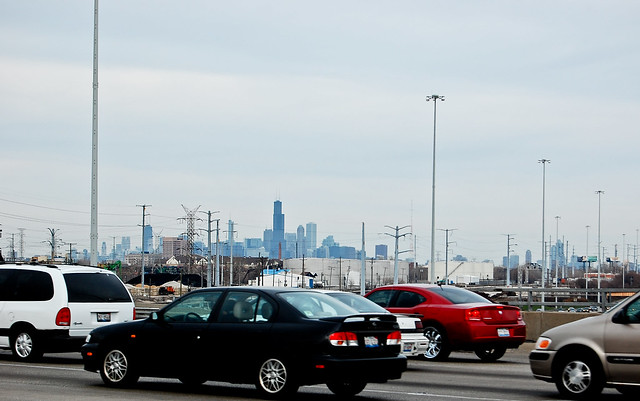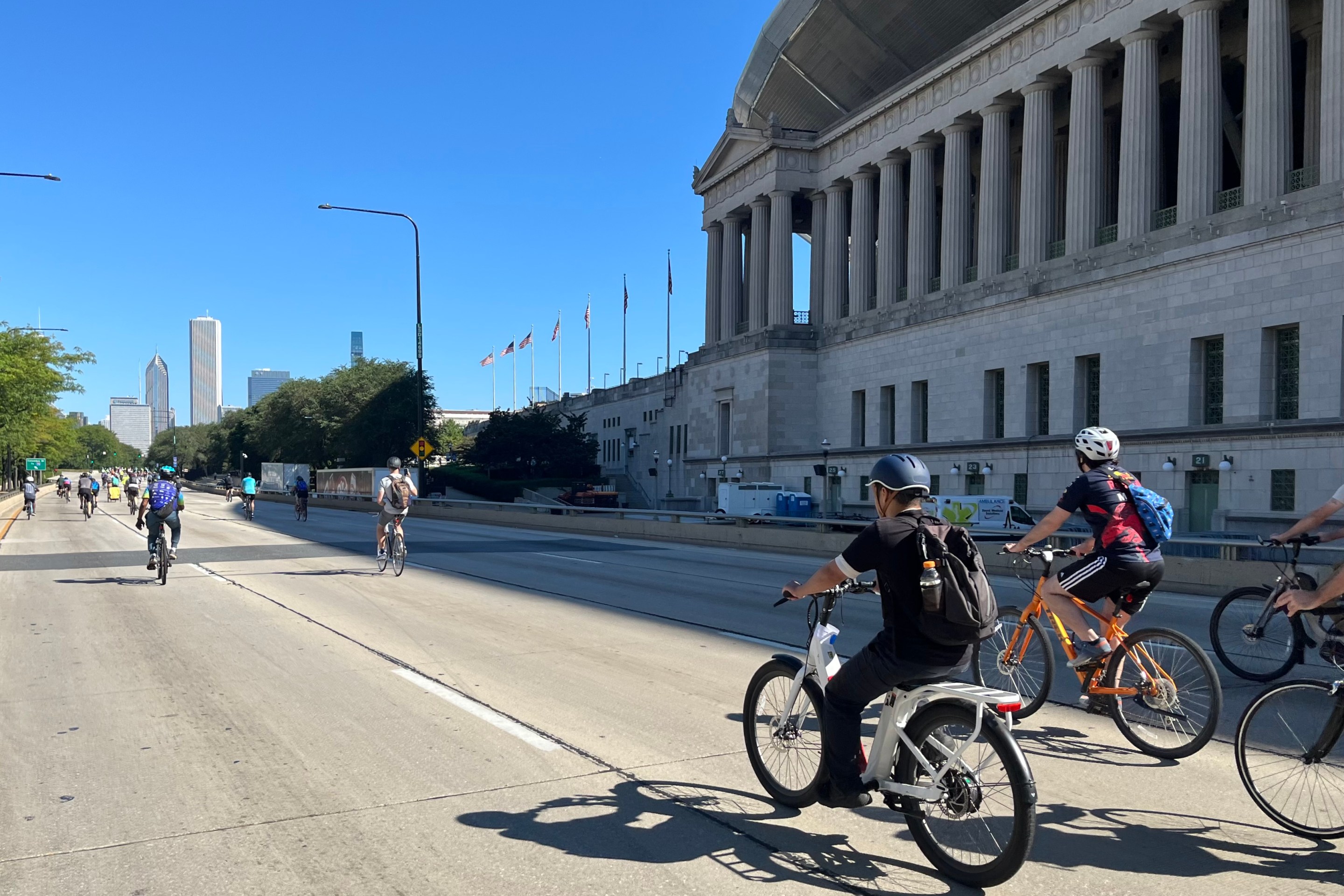The Illinois Department of Transportation is again seeking the Chicago Metropolitan Agency for Planning's help to build an expensive highway expansion that isn't included in the region's planning blueprint. This time, it's not about a putting a flyover above Halsted Street and a wall in front of people's homes, like the agency plans to do with the Circle Interchange expansion. IDOT, along with the Indiana Department of Transportation, needs approvals from several CMAP committees and the full board so the two agencies can spend $2.75 billion building a brand new four-lane highway in southern Will County.
According to the project website, the justification for the Illiana is to relieve traffic on the nearest expressways, give freight traffic a bypass around Chicago's congested highways, and give access to a new airport in Peotone that Governor Quinn has been trying to build. The agencies also say the project would accommodate population growth -- they think people will continue moving to greenfield exurbs. But this assumes that public policy has no influence on where people live, and can't improve housing and transportation options in established communities.
The bottom line is that the highway is unaffordable and would perpetuate sprawl.
CMAP staff, tasked with reviewing the project for the committee and board members who must vote on it, issued an evaluation in late July [PDF] and are asking for public comment through September 3. While the CMAP report doesn't deliver a straight up-or-down verdict, it does make clear that regional planners have a far more critical view of the project than IDOT does.
As Greg Hinz at Crain's reported earlier this month, CMAP projects that the Illiana will induce only one-fifth as much economic activity as IDOT projects [PDF]. CMAP also casts doubt on IDOT's $2.75 billion pricetag, which works out to a much lower cost per mile than comparable road projects in the region, and calls out the financial risk of the project, which would need to be paid for with tolls or public sector payments to contractors. Overall, Hinz wrote, CMAP has made the "highly unusual" decision to "publicly ding a proposed major transportation project."
This is exactly what CMAP should be doing in this case. The agency is guided by the GO TO 2040 regional plan -- created by thousands of participants and approved by hundreds of municipalities -- which emphasizes development and growth in existing areas. It's CMAP's job to analyze all projects according to the methods it has developed over decades and to vet all projects by identical metrics and their pertinence to the regional comprehensive plan.
Meanwhile, IDOT projects that more of the region's growth will occur in "outlying, undeveloped areas," then agitates to build roads in those areas before people move there. If IDOT gets their way, it becomes a self-fullfilling prophecy: projecting sprawling growth, then building highways to accommodate that growth, then watching as the highways induce the sprawl the agency predicted.
As CMAP notes in its report, the Illiana project won't even alleviate congestion in the region as more private cars "backfill the space vacated by trucks." All this does is generate traffic, create higher infrastructure costs, and compel people to live where it's harder and more expensive to access jobs.
How much longer can Illinois continue to shell out billions on damaging highway projects while its credit rating plummets? If freight movement is so important, non-freight should be tolled.
In a related development, Openlands, Sierra Club and Midewin Heritage Association have sued the Federal Highway Administration for approving the Environmental Impact Study submitted by IDOT and INDOT, saying it fails to establish a need for the road, properly evaluate alternative routes, "undermines approved comprehensive regional land use and transportation plans," and "threatens globally significant wildlife habitats" including the Kankakee River (which would likely become a water source for all of the new communities) and Midewin National Tallgrass Prairie.
The CMAP committees and board will consider IDOT's project in their October meetings. Hinz writes that "it will be fascinating to see if the agency actually sticks to its guns and resists pressure to give the project a pass [like it did for the Circle Interchange]. That's what usually happens in Illlinois." And that's what people in Chicagoland should be afraid of.
You can submit your comment to CMAP on this proposed capital plan amendment by e-mail, calling 312-454-0400, or writing to CMAP, ATTN Plan and TIP amendments, 233 S. Wacker Dr., Suite 800, Chicago IL 60606.








